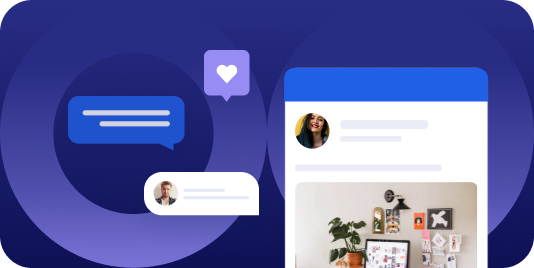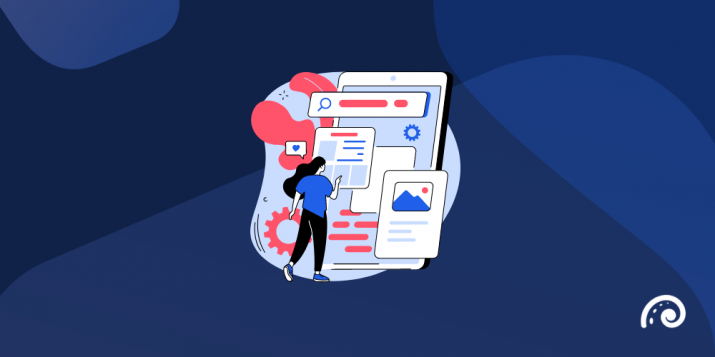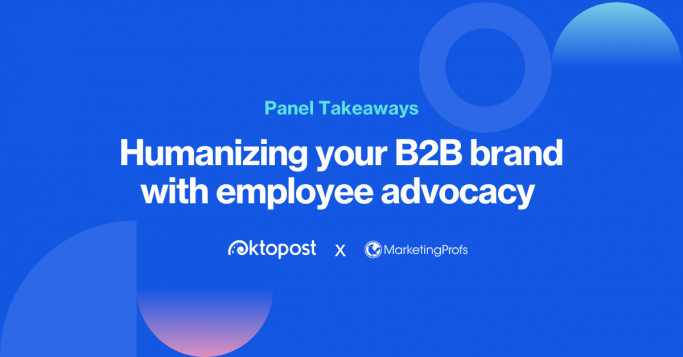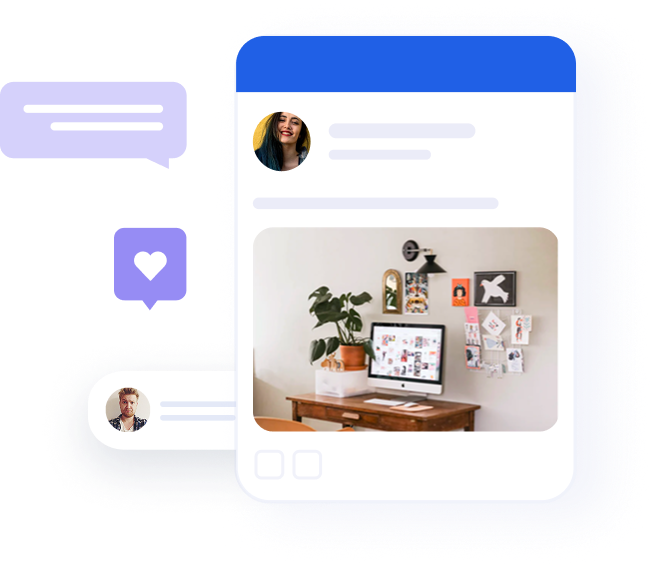
What is social selling? a full guide for B2B brands
Table of contents
While some B2B brands are still committed to more traditional sales methods, social selling can be even more efficient. If your sales strategy doesn’t include social media, leads who could have been brought to your business are likely going to your competitor.
In fact, according to LinkedIn, 78% of social sellers regularly outsell their peers who don’t use social media in their sales processes.
In this article, we’ll examine the social selling process and how it can help B2B companies generate more leads (and ultimately more revenue). Although every B2B brand is unique, social selling can be a powerful tool for virtually any kind of business.
Jump to a Section
- What Is Social Selling?
- What Is the Social Selling Index?
- The Real Benefits of Social Selling
- Which Channels Are Best for B2B Social Selling?
- How to Do Social Selling on LinkedIn
- How to Do Social Selling on Twitter
- How to Do Social Selling on Facebook
- Key Takeaways
What is social selling?
Social selling is, by definition, the act of creating, maintaining, and fostering a relationship with prospects and customers via social media for commercial and retention purposes.
Social selling, a common use case of employee advocacy, is an alternative to cold calling and conventional practices. It involves using social media networks to prospect, build relationships, and provide a unique customer experience. It’s great for discovering and connecting with new leads. More and more companies have been integrating social selling into their sales funnels.
Instead of a hard sell, social selling is all about building positive relationships with leads that will pay off over time. If you primarily sell to businesses in your local area, for example, engaging with nearby companies on social media will ensure that your brand is what comes to mind the next time they need your product or service.
Once those connections have been made, a harder sell can be achieved with a lead that’s already warm, making it that much more effective as a strategy.
What is the social selling index?
The LinkedIn Social Selling Index is a unique metric that offers insight into the success of an individual’s or brand’s approach to social media sales. This score is based on four components:
- Establishing a professional brand through your LinkedIn profile
- Finding the prospects who are most likely to be interested in you
- Interacting with prospects through LinkedIn content
- Building relationships with key decision-makers

Apparently, relationship building is my personal forté.
LinkedIn gives users a raw Social Selling Index out of 100. In other words, you’ll need a full 25 out of 25 in each of the four components in order to get a perfect score. Users are also ranked in their industry as well as their personal network, giving them a better idea of how they compare to their peers.
The Social Selling Index is a great benchmark for determining whether you’re using LinkedIn to its full potential. It identifies a few key areas that you can improve.
Recommended for further reading
The real benefits of social selling
According to the LinkedIn website, leaders in social selling generate 45% more sales opportunities compared to those with a low Social Selling Index. Similarly, those leaders are a full 51% more likely than their peers to reach their quotas. These figures speak to the power of social selling for all kinds of B2B brands, including those that still rely on other sales tactics.
Social selling goes even further to benefit both B2B brands and individual salespeople:
- Thought Leadership: Another interesting statistical insight is that 47% of buyers report being influenced by thought leadership to purchase from a vendor who they hadn’t previously considered a leader in their field. This indicates that even smaller brands can take advantage of social media to connect with clients who might not have looked at them otherwise.
- Brand loyalty: If a buyer feels like they can trust a particular supplier’s experience and knowledge, they’ll be more confident buying from that supplier in the future. Social media is one of the best ways to develop that presence and show potential buyers that you can provide the service they’re looking for.
- Amplifying traditional tactics: Rather than making hard sales, your employees will be able to focus on building organic relationships while positioning themselves as thought leaders.
Ultimately, social selling is equally about sales and brand presence. Instead of having to make each sale from scratch, social selling enables companies to draw on their existing reputation to naturally bring in new leads while staying connected with old ones. An effective social selling strategy leads to benefits at all levels of the business and each step of the sales funnel.
Love what you’re reading? Also, check out The 3 Big No’s of Social Selling.
Which channels are best for B2B social selling?
While you could theoretically develop a social selling funnel on almost any channel, three platforms stand out from the rest for B2B brands in 2022.
LinkedIn might not have the same image as Facebook, Twitter, or other social media giants, but it’s still the most effective way for B2B brands to develop relationships with leads. For example, even though LinkedIn generates 84% fewer shares than Facebook, it still produces 47 times as many link clicks.

Even though it serves more of a niche audience and a niche purpose, LinkedIn is still surprisingly competitive with websites like Twitter and Facebook. LinkedIn currently has about 810 million members in more than 200 countries, so its reach goes well beyond the US and other highly developed economies in Europe and Asia.
Similarly, LinkedIn employee advocacy posts led to 24 times more comments compared to corresponding posts on Facebook and Twitter combined. Both of those channels can provide value to some companies, but LinkedIn should be the first step in any social selling strategy.
On Twitter, the platform promotes that easy sharing and lifts up content that’s been shared many times. However, on LinkedIn, you’re more geared towards having a discussion with the person who published this content on the post where you originall found it.
This is why a post on LinkedIn might live for 8 months [over a Tweet’s 18 minutes]. LinkedIn is built for those real conversations between connections and prospects.” -Whitney Blankenship, from the webinar “What Does Employee Advocacy Bring to the Table for B2B Brands?”
LinkedIn users visit the platform for networking, business opportunities, and other work-related matters, so it makes sense that this would be the right channel for social sales. Additionally, LinkedIn is an effective medium for long-form content, which separates it from platforms like X (Twitter), which are built on quick thoughts. Developing a professional LinkedIn profile should be one of your top priorities as a B2B brand.
Need more info on LinkedIn social selling? Check out B2B Marketing 101 for LinkedIn Social Selling.
X (Twitter)
Twitter might not be as closely associated with the business world as LinkedIn, but it’s still a worthwhile investment for many B2B companies. In fact, Twitter alone accounts for a total of nearly 85% of all shares on employee advocacy posts, even though those shares didn’t result in as many comments as LinkedIn.
As mentioned above, the key downside of Twitter is that it limits users to short-form content, with a limit of 280 characters on each tweet. This can make it difficult to build substantive relationships with leads, especially compared to LinkedIn and Facebook.
Facebook is the main customer-facing social media channel for many businesses, so it makes sense that it would be a powerful platform for social selling. If you don’t already have a Facebook profile for your business, today would be a good time to start.
In fact, Facebook already has an incredibly large audience of nearly 3 billion people, making it the most popular social media channel on Earth. While it isn’t quite as tailored to the needs of B2B businesses, it’s still a crucial element of many social selling workflows.
“We have to build an empire in a target account or a target region to be successful. We need to build trust. We need to win over detractors. We need to be able to find, relate, and engage with everyone in today’s consensus purchase. We need to go wide and deep into a company to win new customers. We need to go even wider and deeper to expand and enrich relationships with existing customers.” Dan Swift, from “The When, Where, How, and Why of B2B Social Selling“
How to do social selling on LinkedIn
LinkedIn is arguably the most competitive social media platform in the B2B space, so you won’t be able to differentiate yourself without a clear plan of attack. Let’s take a closer look at some of the most effective LinkedIn sales tactics.
Flesh out your profile
Unsurprisingly, selling products and services on LinkedIn starts with the quality of your profile itself. Your LinkedIn profile is your main resource for connecting with other users, so an incomplete or unprofessional profile will reflect poorly on your business and push leads away.
One of the easiest ways to make your profile appear more reputable is to get endorsements from other professionals in your network. Endorsements will appear directly on your profile and show viewers that you really do have expertise in your particular niche.
You will also need to start posting your own content in order to position yourself as a thought leader and connect with a larger audience. There’s no shortcut to content development—you simply need to find ways to provide valuable insights that readers can’t find anywhere else.
Focus on networking
No matter how much you work on your profile and LinkedIn content, you won’t be able to make any sales unless you can connect with the right people. Regardless of the industry you’re working in, networking is critical to sustainable success with LinkedIn social selling.
If you’re having trouble building your LinkedIn profile, consider joining LinkedIn groups that are relevant to your industry or target market. From there, you’ll have an easier time connecting with relevant users who are likely to be interested in your brand.
Use LinkedIn sales navigator
The LinkedIn Sales Navigator is a premium service designed to help LinkedIn users develop a more efficient sales funnel.
While the Sales Navigator comes with a demo or free trial, you will need to pay for ongoing access to these features. Plans currently cost $79.99 per user per month billed annually for the Core tier or $125 per user per month billed annually for the Pro tier. If you need more than the Pro subscription offers, you can also reach out to LinkedIn for information about a custom Advanced Plus solution.
LinkedIn provides monthly plans for Sales Navigator, but these come with significantly higher prices. You’ll have to pay $99.99 per month for Core or $159.99 per month for Pro, so committing to an annual plan is better if you decide to use the service.
How to do social selling on twitter
While many of the same ideas apply to social selling on Twitter, it’s important to tailor your strategies to each individual platform. Here are a few ideas to help you get more out of Twitter.
Create lists
Lists are a unique Twitter feature that can make interacting with the right people easier. Twitter allows users to set up both public lists and private lists, and each one can be extremely helpful.
Public lists are ideal for highlighting any Twitter creators you appreciate. Twitter users will be able to view tweets from everyone on the list, so you’ll have the opportunity to drive traffic to your favorite profiles.
Private lists, on the other hand, are only visible to the person who creates them. With a private list, you’ll be able to keep an eye on prospects, competitors, and other people of interest without engaging with them directly.
Build engagement
Getting a customer to interact with you is great, but it should always be the first step toward further engagement. Leads should feel like the time they spent connecting with you was worthwhile and led to something memorable.
Of course, trying to build social media engagement doesn’t mean that you should interact as often as possible. Instead of focusing on quantity, try to add real value to their experience when the opportunity comes up naturally.
This strategy requires careful attention to social listening. Twitter lists, for example, are a good way to monitor the leads you’re most interested in. You can also monitor relevant hashtags and keywords to connect with new customers. Every positive interaction will add value to the target prospect.
One common mistake is approaching these interactions from a sales-first perspective instead of showing a genuine interest in the lead’s experience. Your audience should think of you as a real partner who cares about their success—not just another brand that’s thinking about the bottom line.
How to do social selling with Facebook
Facebook isn’t quite as important for B2B brands as it is for B2C companies, but it’s still a top-3 social selling channel. As with LinkedIn and Twitter, successful social selling on Facebook depends on strong relationships with key decision-makers.
Engage with similar businesses
Engaging with businesses that relate to yours will help you expand your reach. However, you should focus on other companies that you can build positive relationships with instead of interacting with your direct competitors.
If you’re having trouble finding new partners, start by looking at businesses that offer services that are complementary to yours. For example, a company that offers remote work software might have a similar audience to another brand that provides IT services. In that case, both companies will be able to benefit from cross-promotion.
Develop audience relationships
One of the most common mistakes in Facebook marketing is treating customer relationships as one-way streets. Far too many brands post engaging content on their Facebook pages, only to leave it up without responding to any of the users who are interested in the post.
When a follower leaves a comment on one of your Facebook posts, make a point to reply as soon as possible. If their comment was positive, you’ll have a chance to reinforce their impression by publicly thanking them and inviting them to re-engage. Even if their comment was negative, a response will still show other users that you take their concerns seriously.
Leverage industry pages and groups
Facebook pages and groups that are relevant to your industry are another key resource. Users who join these groups have a strong interest in the industry and are excellent targets for social selling.
Becoming active in popular pages and groups will help you position yourself as a thought leader in your field. Make an effort to answer questions, direct users to relevant resources, and show the group that you’re trustworthy. Even if some posts don’t lead to an immediate sale, your image will pay off over time in the form of brand loyalty.
Key takeaways
Social selling can take time to produce results, but it’s a vital element of any B2B sales funnel in 2022. While LinkedIn is still the leader in social selling, Twitter and Facebook can also be highly effective in some industries.
Whatever channels you choose, social selling is all about identifying the right leads and building positive relationships with them. It’s important to find the right social selling tools, define a great social selling strategy, and onboarding your sales team for best practices. You’ll watch your sales go through the ceiling once you go in with a plan and a platform.




